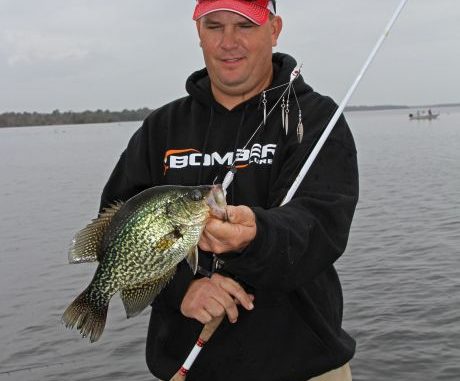
Unlike those shoulder-straining full-size umbrella rigs designed for largemouth bass, the crappie versions won’t send you to the chiropractor after a weekend on the lake.
For the lighter two-armed rigs, you’ll find spinning tackle easier to handle, but make sure your rod has enough backbone to handle the higher level of resistance without doubling over on a standard retrieve.
A rod with a soft tip and plenty of backbone lets you load up and launch a good cast while retaining all the fish-fighting strength you’ll need if you nab a double- or triple-header of slabs.
Now, blind casting over likely areas is inherently more productive with multiple baits, but Scroggins said you’ll put the rig’s potential to better use by targeting crappie hangouts like brush piles or stake beds.
Preventing structure snags requires careful presentations, however, with close monitoring of your depth and retrieve speed. Scroggins said anglers can avoid this potential hazard altogether by targeting crappie over contours rather than structure.
“You want to look for those turns in the river channel,” he said. “That’s where the crappie like to school, so just idle the channel until you find one of those bends, toss out a buoy and then look for the schools of fish on your depth finder.”


